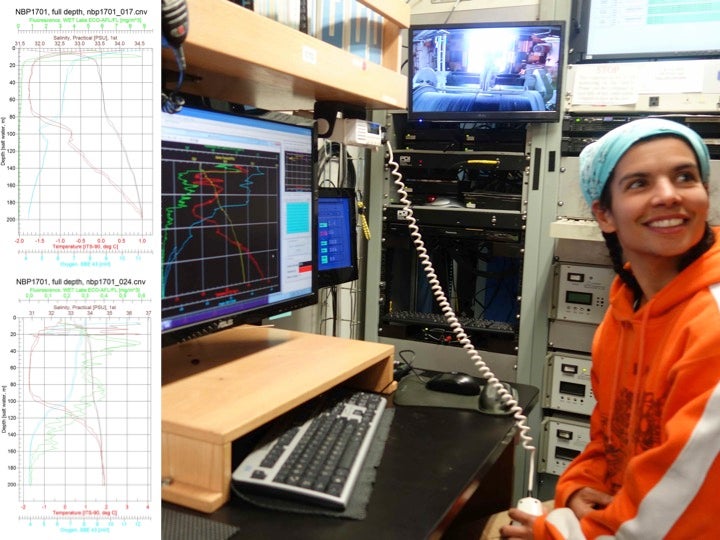We couldn’t do all this sampling without the amazing support staff available on this ship. The ship’s crew get us to our sample locations, keep everything working and keep us fed and comfortable. The MTs (Marine Technicians) get our sampling equipment in and out of the water and keep it functioning. Meanwhile, the ETs (Electronics Technicians) maintain communication with the equipment, through an electronic cable. On this cruise our main sampling equipment is the CTD, mentioned and shown in several previous posts. The CTD is raised and lowered through moving seawater, to depths of 4000 meters, in all kinds of conditions, so keeping all the parts working smoothly and those cable connections tight requires constant attention.
During the actual cast we sit with the ETs as they trip the sampling bottles electronically at the depths we’ve chosen. Today’s image shows ET Adina Scott at the communication console. The console is displaying the data collected on the downcast, temperature, oxygen, salinity, and that bright green line, chlorophyll, our version of a fish finder. We usually collect water at two depths, the surface and the depth that shows a chlorophyll, or phytoplankton, maximum
Also included are the profiles of two casts, one at much higher chlorophyll levels than the other. The scales on the graphs are adjusted for every cast, at one of these the chlorophyll peak is about 8.8, while at the other, yesterday’s offshore station, the chlorophyll reading was about 0.6. An earlier post shows an example of the difference in diatoms seen at these two types of stations where the plankton abundance was 10 times greater inshore than offshore. Posted by: Celia Gelfman

